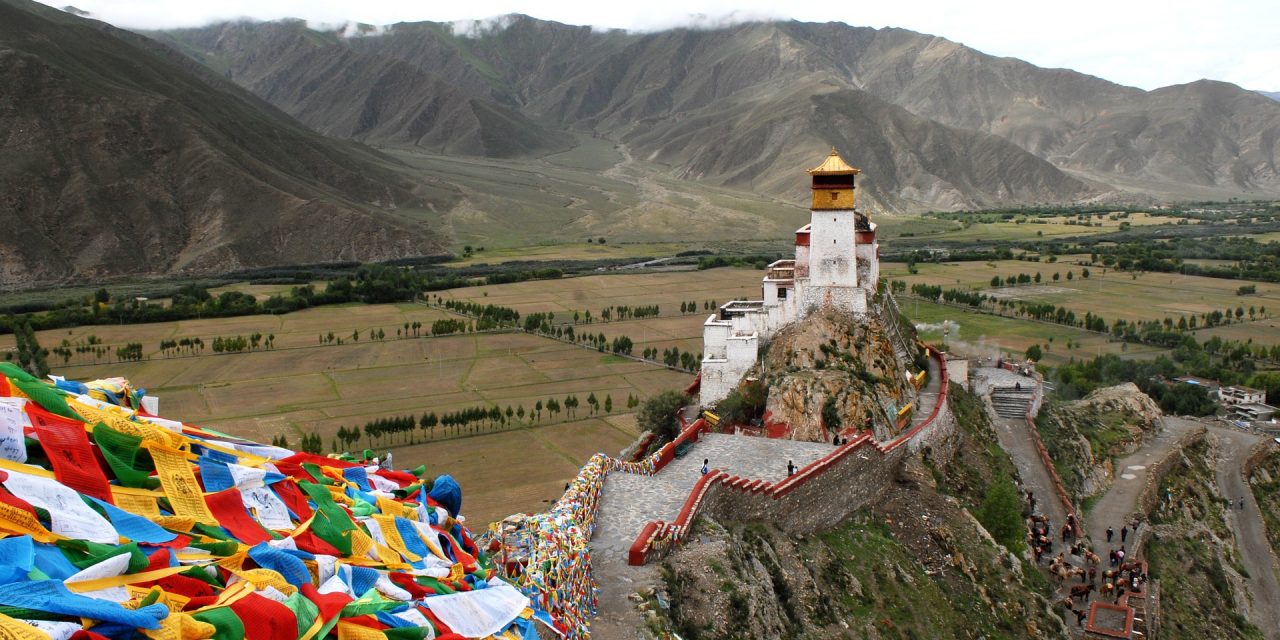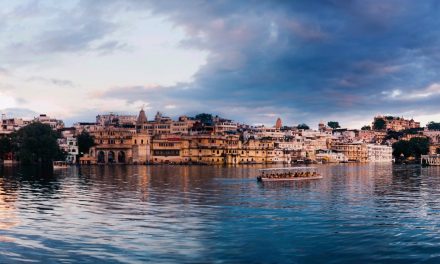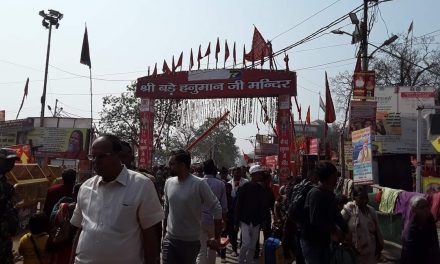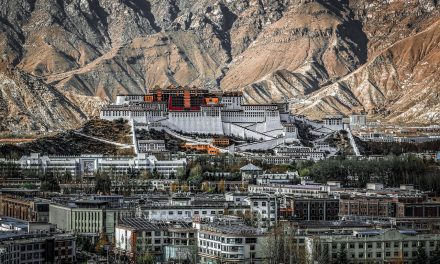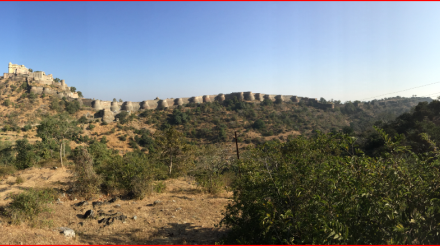Tibet : 5:00 am – phone ringing in the hotel room
I picked up the phone and a familiar voice spoke up – “Namaskaram, it is the wake up call for Yoga practice”
Yes that has been our routine for the past 3-4 days. The initial bit to get out of the bed is tough but the regular yoga and breathing practices has no doubt helped!
Today is a big day for the entire group as we will be embarking on our journey to Lhasa in Tibet – “Roof of the world”!
We made our way to the airport around 10:30 am and reached Lhasa around midday. Lhasa is 2 hours behind Kathmandu time. We were welcomed with a traditional Tibetan white scarf called Khata Or Jel-Dhar.
As a first experience, the air felt refreshing and free from any pollution. A whole team of Sherpas were there ready to start working as the back-up team ( back-bone of the trip is the right term to be honest).
From Lhasa airport to the Lhasa hotel was about an hour’s drive. We had an experienced Tibetan guide who enriched us with some interesting Tibetan history of Dalai Llama, the different languages, the different sects, story of the first willow tree in Tibet and many more. We were told to cover our mouth here-on, as the dry wind can make you more thirsty than required and wear warm clothes especially covering the ears and the throat to prevent catching any cold, prior to the trek. Also as we were in 11000+ feet height we were told to walk around albeit slowly especially while climbing stairs in order to acclimatise. We were shown some exercises (physical and breathing), that helped in acclimatising, which we were to follow every time we ascended a certain hundred feet. We reached the Lhasa hotel and to our pleasant surprise were welcomed with a traditional Tibetan song and music.
It will not be out of place to mention that the whole Kailash Yatra (Yatra means trip) was extremely well organised amongst the Isha group and the Sherpas from the Trekker’s society. Whilst the Isha group made sure that we were maintaining a discipline as a group, performing the Yoga practices and overall having a good spiritual enrichment; the sherpas made sure all the logistics were seamlessly carried out. We would pack our duffle bags every time we moved station, and the sherpas will pick them up from outside our rooms and store them in the travel van. They additionally cooked delicious items, almost 3 times a day – breakfast, lunch and dinner and would sometimes arrange for evening snacks too!
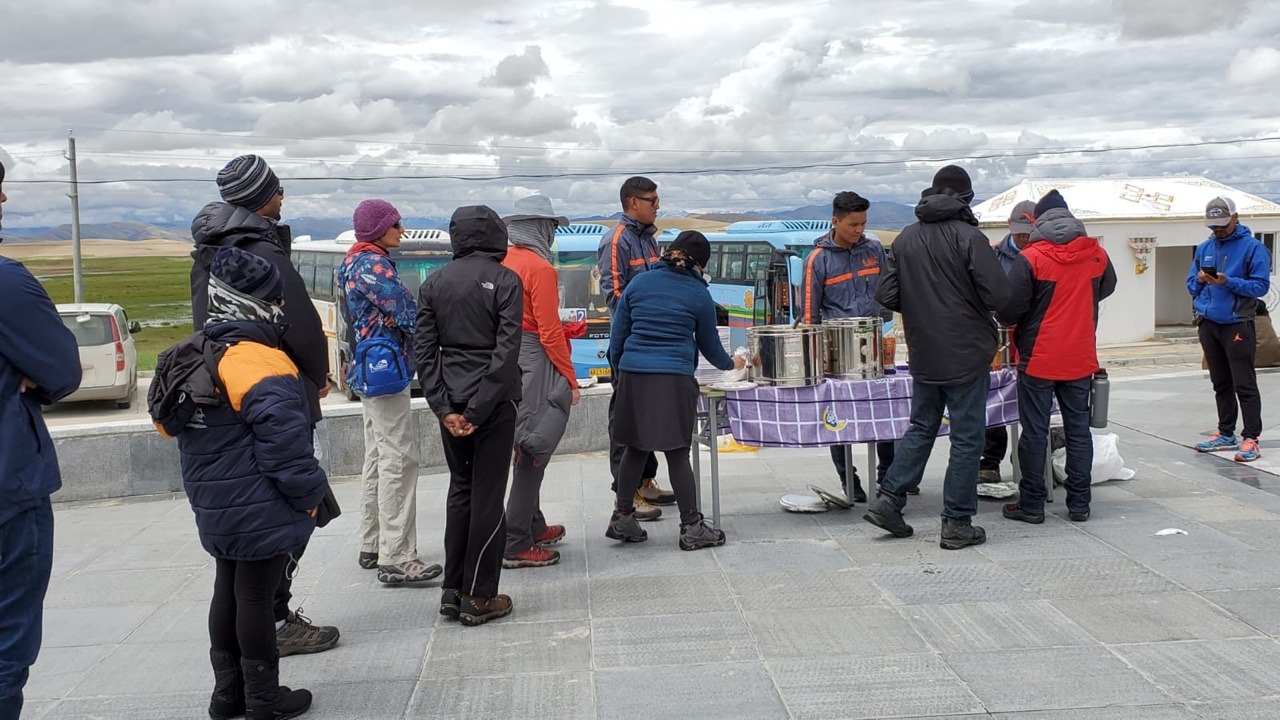

Next Morning, on 26th July, after our breakfast we proceeded to see the Jokhang temple, which since 2000 was designated as a UNESCO World Heritage site. Jokhang Temple (meaning the “House of the Lord”) is the holiest site in Tibetan Buddhism. Initiation ceremonies for the Dalai Lama and Panchen Llamas are held here. The temple was constructed in 647 AD by the first ruler of unified Tibet, King Songtsen Gampo (617-49). The temple is open to pilgrims and tourists but carefully controlled by the Chinese government since 1951 when the Chinese occupation took place and the Temple has since become the focus of Tibetan cultural identity and resistance.
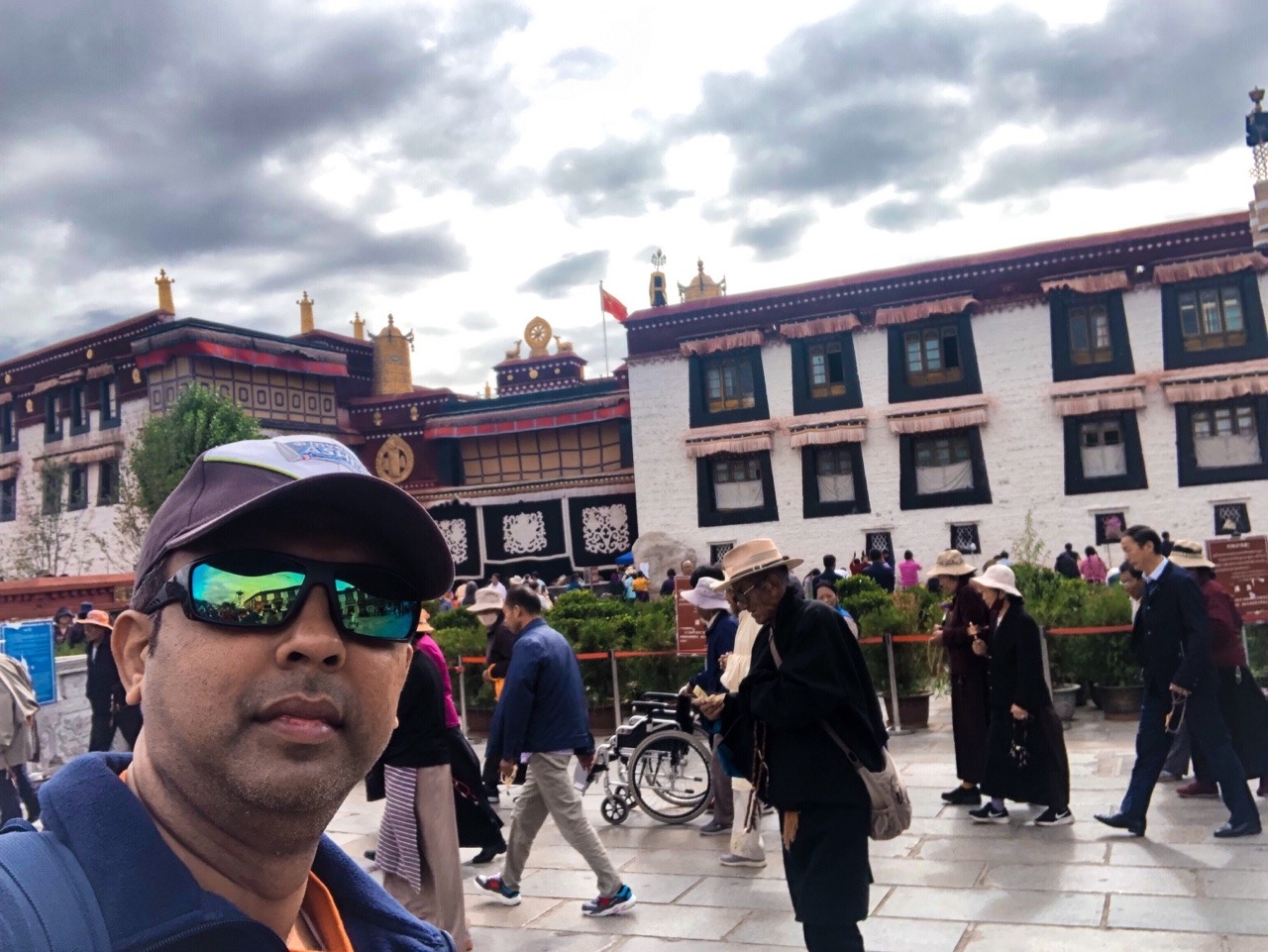
There is a large open porch in front of the temple where local Tibetan pilgrims are seen prostrating for a number of times they had took resolve for. The interior of the temple consists of a number of chapels dedicated to various Gods and bodhisattvas (an enlightenment-being).
Above the main entrance is a Dharma Wheel (chakra) flanked by two deer. This represents the unity of all things and symbolizes the Buddha. This is a must see place while visiting Tibet.

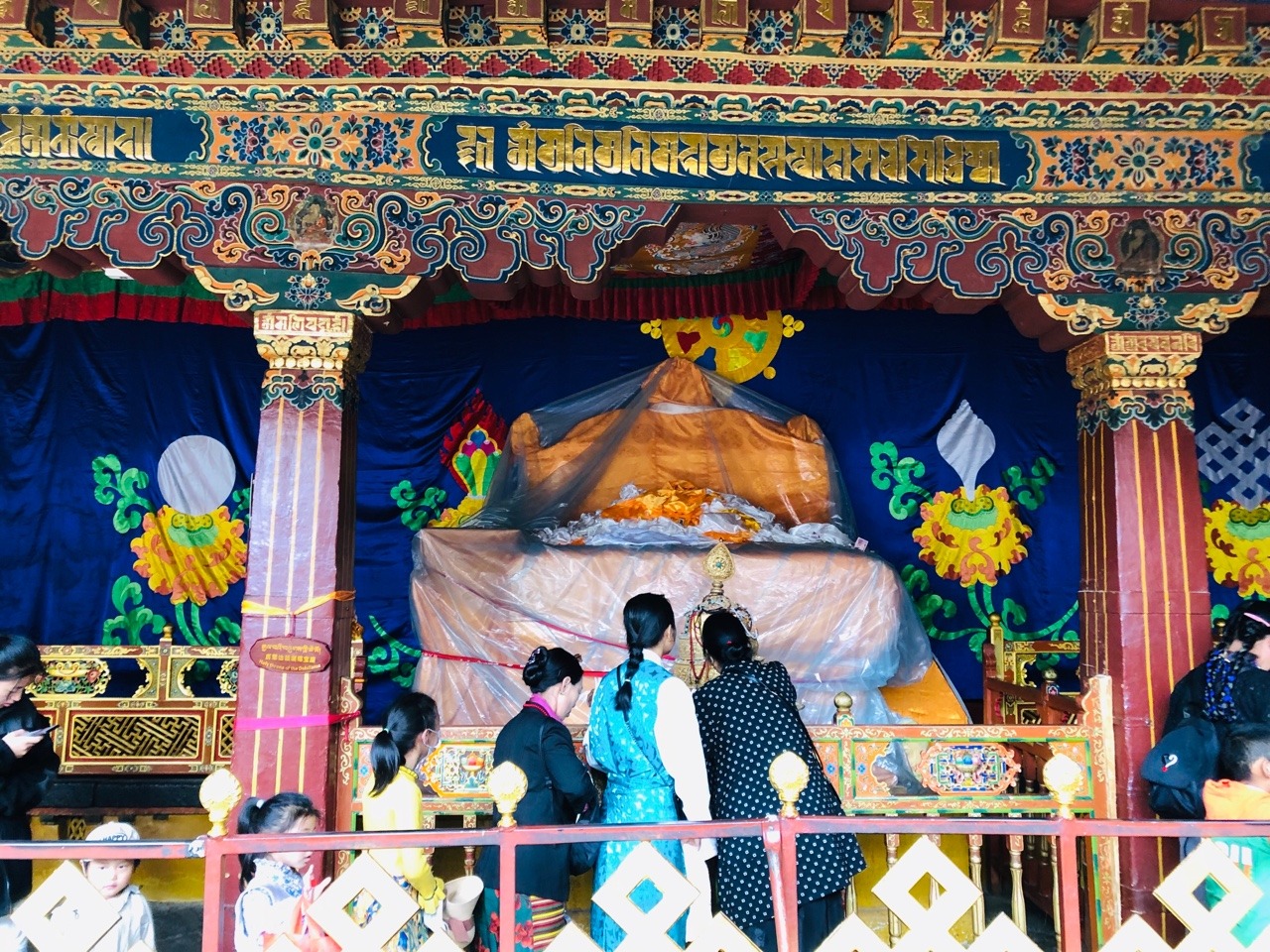
We headed back to the hotel to have some delicious lunch prepared by the Sherpas and then carried on our journey to the Sera Monastery, one of the most beautiful places in Tibet. It is also one of the best religious institutes of the region.
We arrived at Sera Monastery around 14:30 in the afternoon, just in time for witnessing a very different event! Between 3 and 5 pm in the weekdays, young monks or students can be found scattered in groups of two to four in the courtyard debating one another on their philosophy. It is an interesting form of debate, as the speaker asks questions and makes their points with the whole body. They gesture through a raised voice and clap of the hands towards their ‘opponents’. Some even add their own flavor to the gesture, which makes things quite entertaining. Some of the monks can’t keep themselves from laughing, and as an audience you won’t either!
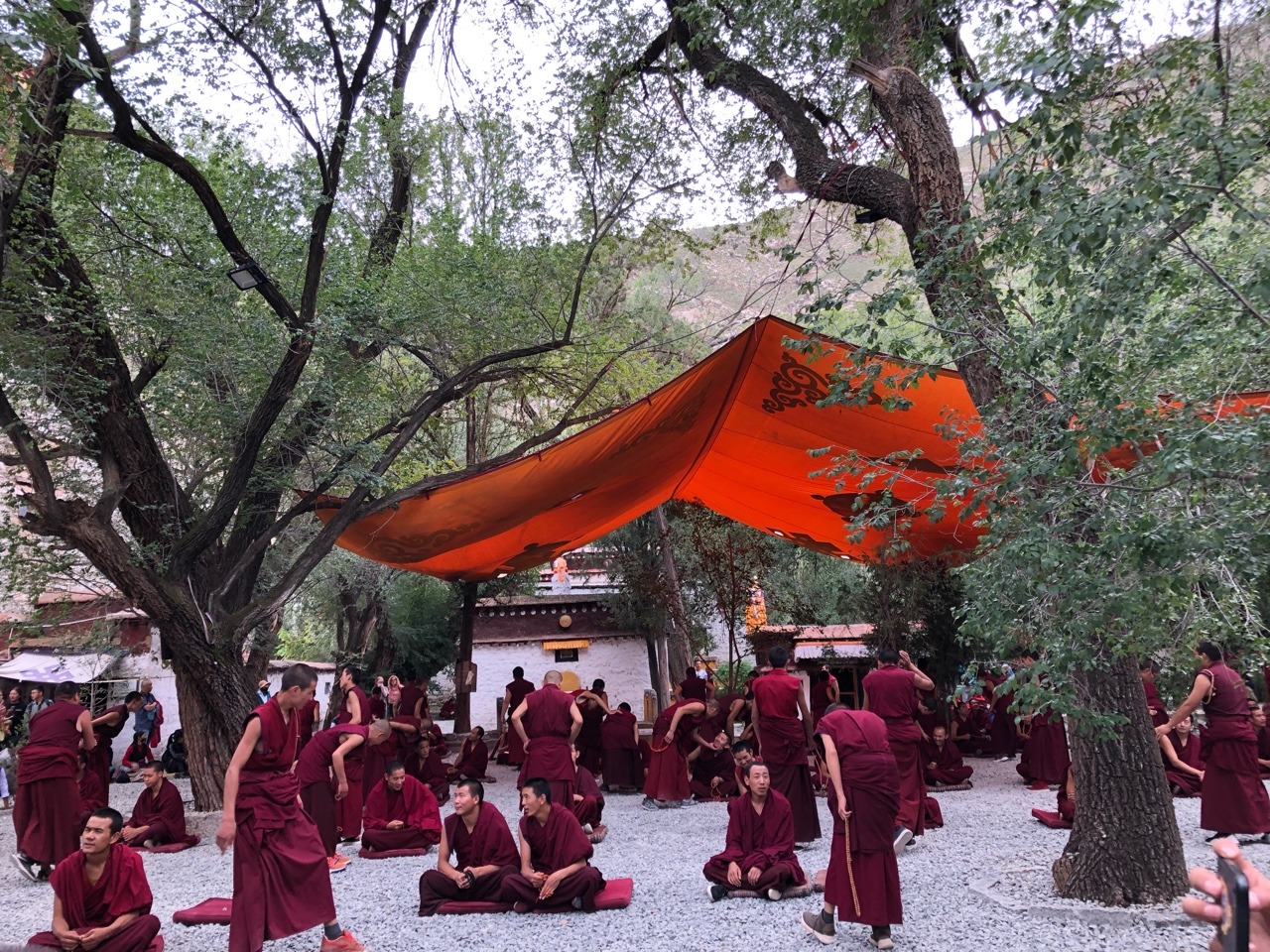
Sera Monastery was founded in 1419 by Sakya Yeshe. It is a part of the Gelgupa sect of Tibetan Buddhism. At it’s prime, Sera Monastery had 5 separate colleges and about 5000 monks, but it is significantly smaller in size, today.
On our way back to the hotel, we went around the Potala palace from outside and revered its architecture and beauty.
It is of tremendous significance in Tibet as it used to be the official residence of the Dalai Llama. It is also the highest palace in the world and a UNESCO world heritage site. The main buildings of Potala Palace are situated on the Red Hill by the side of Lhasa River.

Potala Palace’s history goes back to 1,300 years ago. It was built in the 7th century when the Tubo Kingdom ruled Tibet to house Srongtsen Gampo and his two wives – Princess Bhrikuti of Nepal and Princess Wencheng of Tang Empire.
After the fall of Tubo Kingdom, Potala Palace was almost ruined by wars until 17th century when His Holiness – the Fifth Dalai Lama decided to rebuild Potala Palace. The Fifth Dalai Lama moved the government from Drepung Monastery to Potala, which made Potala as the political and Buddhism center of Tibet.
That was a lot of history and heritage in one day. We took a group photo and made our way to the hotel for dinner and medical tests.
The next two days saw us travel 10 hours each day to two other big cities of Tibet – Shigatse (at 12585 feet altitude) and Saga (at 15223 feet altitude). This was necessary to acclimatise on our way upto Lake Mansarovar and Mount Kailash. We didn’t get much time to go out in these cities after long hours of travel. But both these cities helped us to get ready for the ultimate goal :).
The acclimatisation is going well but my BP is still quite high now similar to some of my trip mates. The docs have now put me on a preventative medication for high altitude. I must admit I was getting impatient for reaching Mansarovar. However, an ancient Tibetan proverb brought solace –
“At the bottom of patience is Heaven”
Until the next post, like always, Live Well, Stay Well.
Image Courtesy : Pixabay | First Published in Tumblr
Read KATHMANDU TALES

